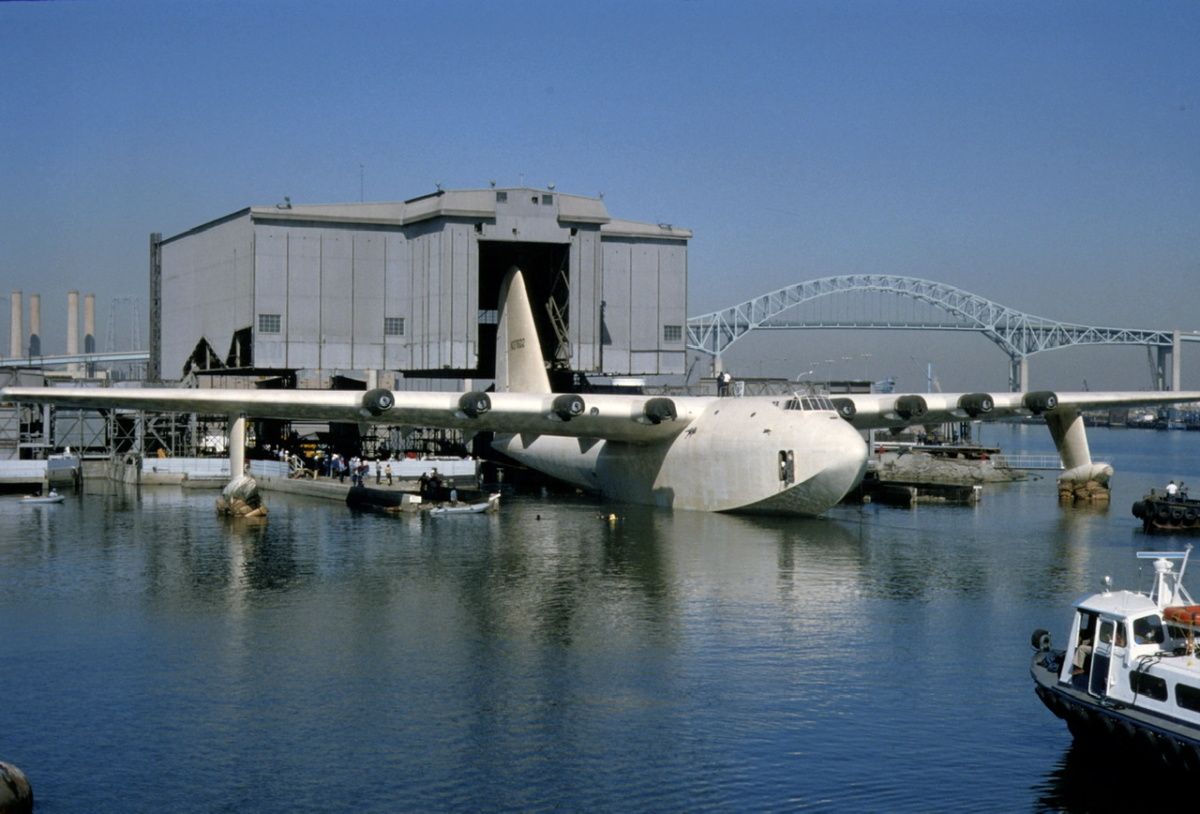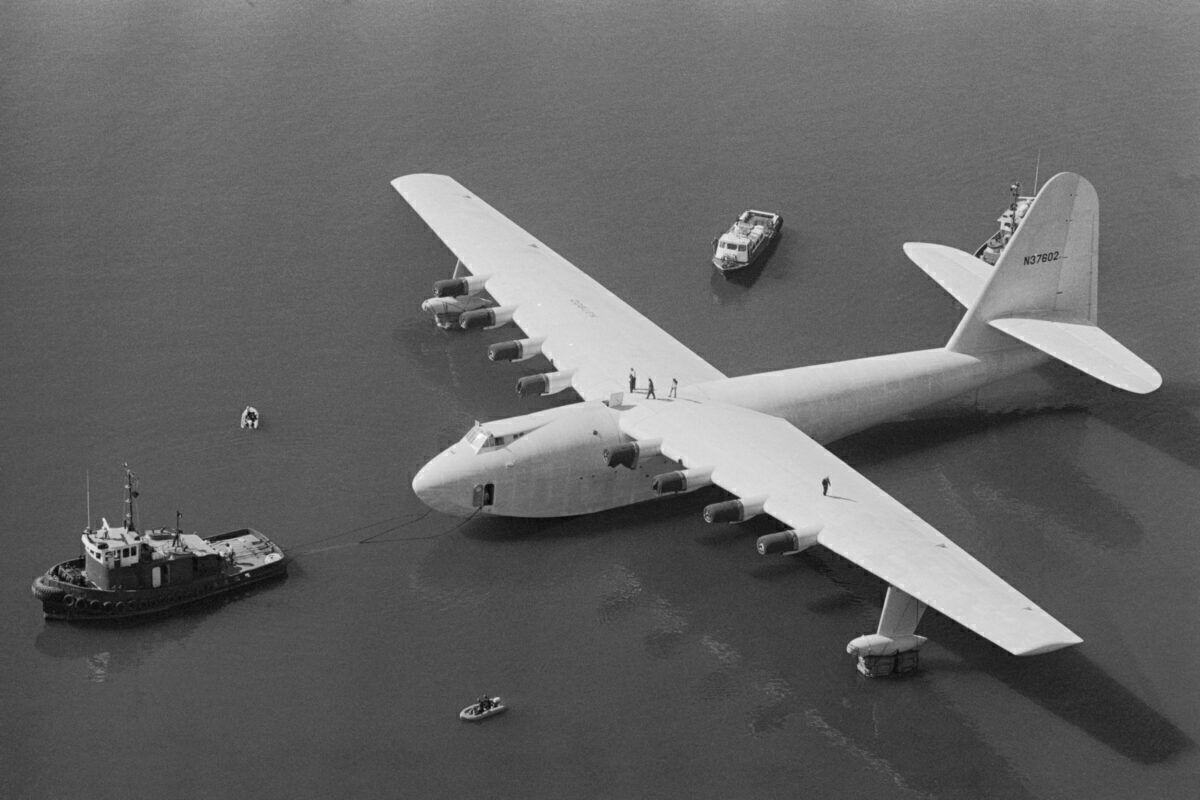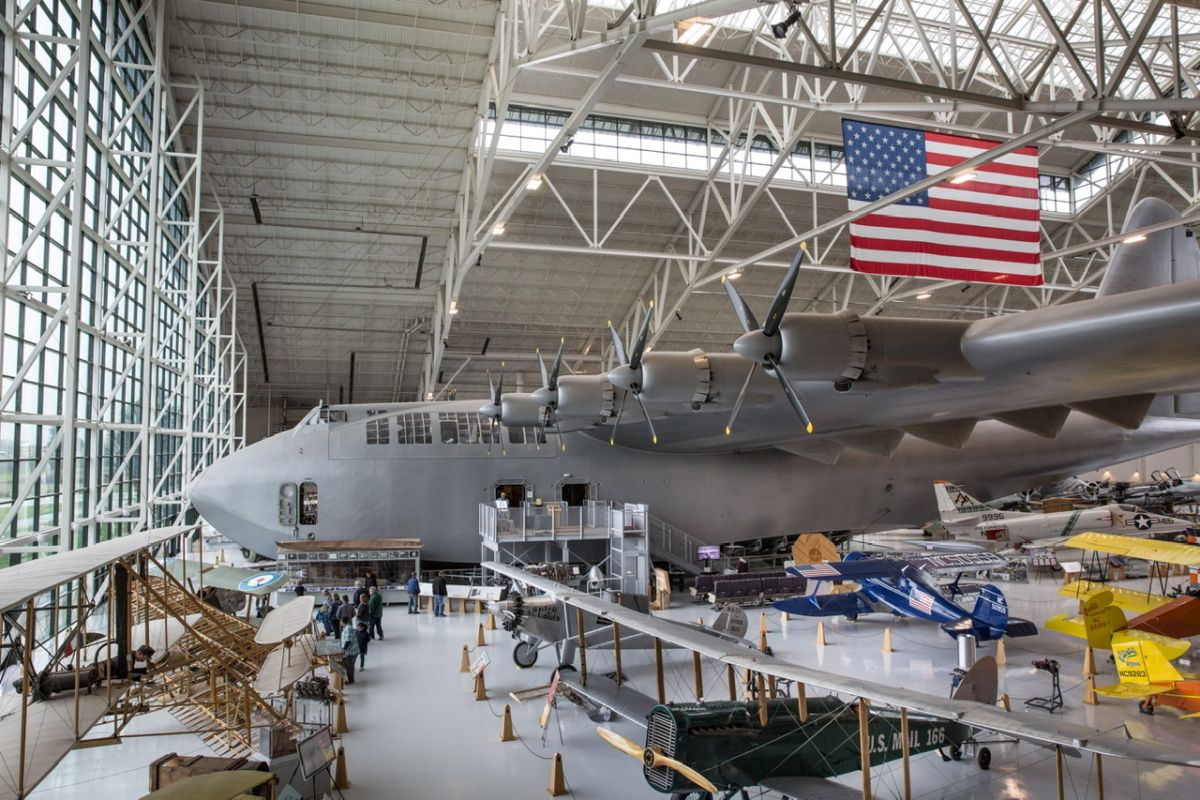Designed by the Hughes Aircraft Company, the Hughes H-4 Hercules, commonly known as the Spruce Goose, made its first and last flight 74 years ago yesterday. Designed as a strategic airlift flying boat, The Spruce Goose was intended to be used to carry cargo during the Second World War. Built from wood due to wartime restrictions on metals, the Hughes H-4 Hercules is the largest flying boat ever built.
In 1942 at the height of the Second World War, Allied shipping in the North Atlantic suffered heavy losses to German U-boats. Desperate to transport weapons and personnel to Great Britain, the United States War Department started looking for a large aircraft that could cross the Atlantic.
The Spruce Goose could carry two Sherman tanks
The idea for the Spruce Goose was the brainchild of Liberty Ship builder Henry J. Kaiser. Designed to carry 150,000 pounds, 750 fully kitted troops, or two M4 Sherman tanks, the plane was a collaboration between Kaiser and American business magnate Howard Hughes. Despite coming up with the idea for a flying cargo ship, Kaiser had no aeronautical experience, so he deferred the plane's development to Hughes and his designer, Glenn Odekirk.
After eventually settling on a final design that would use eight Pratt & Whitney R-4360 Wasp Major 28-cylinder air-cooled radial piston engines for propulsion, work began on the massive plane. After sixteen months, Kaiser was fed up with delays and Hughes's desire for perfection and decided to leave the project.
Hughes was summoned to appear before a Senate Committee
Undeterred, Hughes decided to go it alone, signing a new contract with the United States Government for one plane. The work on the H-4 Hercules, as it was now called, progressed exceptionally slowly. So slow that by the time the prototype was completed, the war was over.
Constructed in sections, the aircraft had to be transported to Pier E in Long Beach, California, for final assembly before test flights. Concerned about the money the government was spending on the project, Hughes was summoned to appear before a Senate War Investigating Committee in 1947.
When speaking before the committee about the Spruce Goose, a name Hughes disliked intensely, Hughes said:
"The Hercules was a monumental undertaking. It is the largest aircraft ever built. It is over five stories tall with a wingspan longer than a football field. That's more than a city block. Now, I put the sweat of my life into this thing. I have my reputation all rolled up in it, and I have stated several times that if it's a failure, I'll probably leave this country and never come back. And I mean it."
Get your boarding pass to the flight of the year. The Future Flying Forum is taking off soon!
The Spruce Goose made its only flight on November 2, 1947
With Hughes at the controls, the Spruce Goose began a series of tests in the waters off Cabrillo Beach in California on November 2, 1947. Along with Hughes, the aircraft had a co-pilot, two engineers, and 16 mechanics. The plane also had several members of the press onboard to record the day's events.
After two successful test runs, the aircraft picked up enough speed to lift off and remain airborne for 26 seconds on the final run of the day. While in the air, the plane flew a mile before safely touching down on the water.
Despite having vindicated everything Hughes had said about the plane, it never flew again. If you want to see the Spruce Goose, it is displayed at the Evergreen Aviation & Space Museum in McMinnville, Oregon.
Have you ever seen the Spruce Goose? If so, please tell us what you think about it in the comments.



